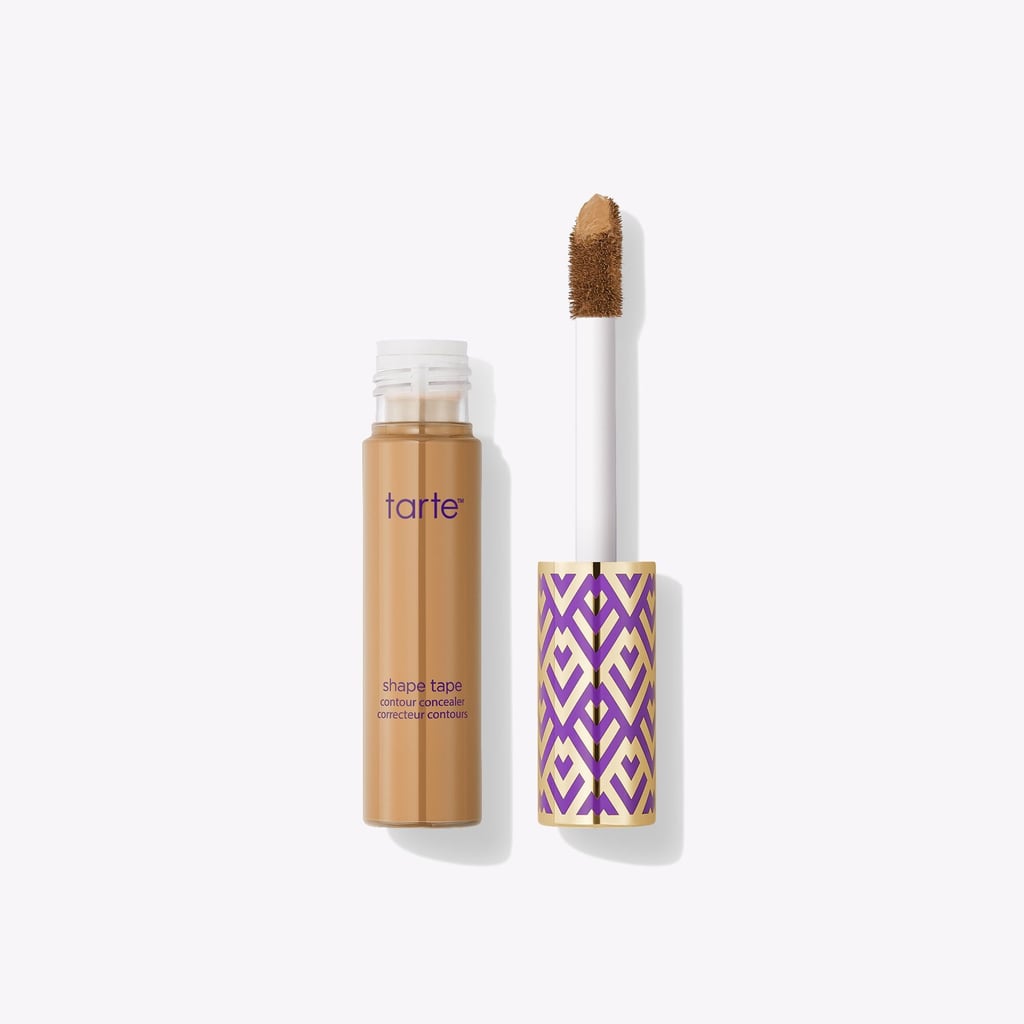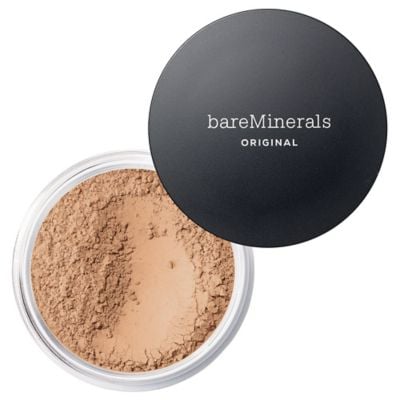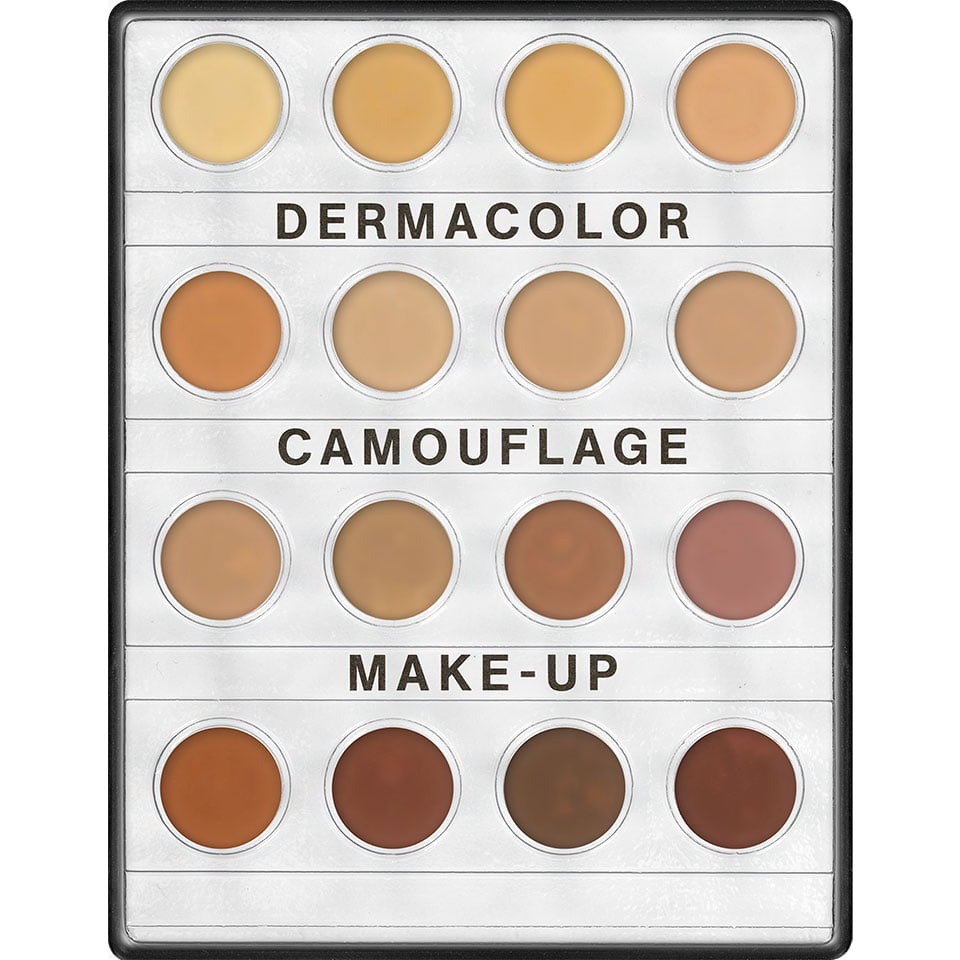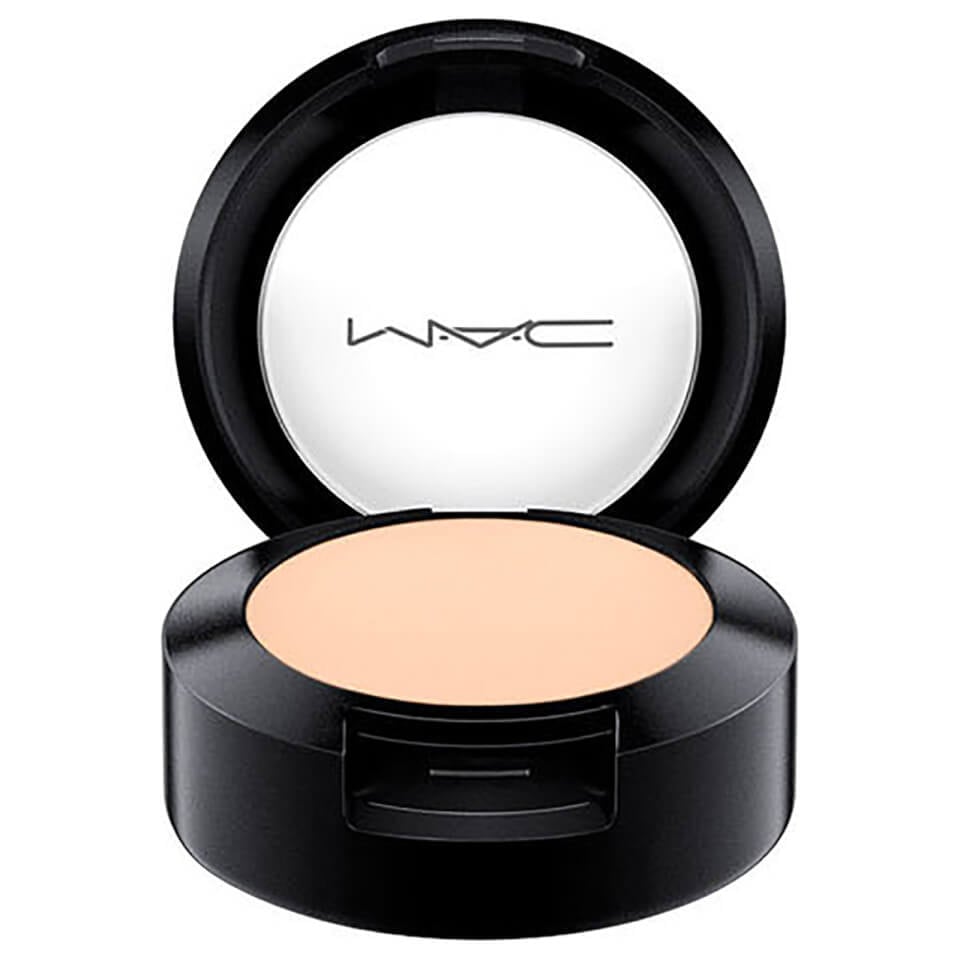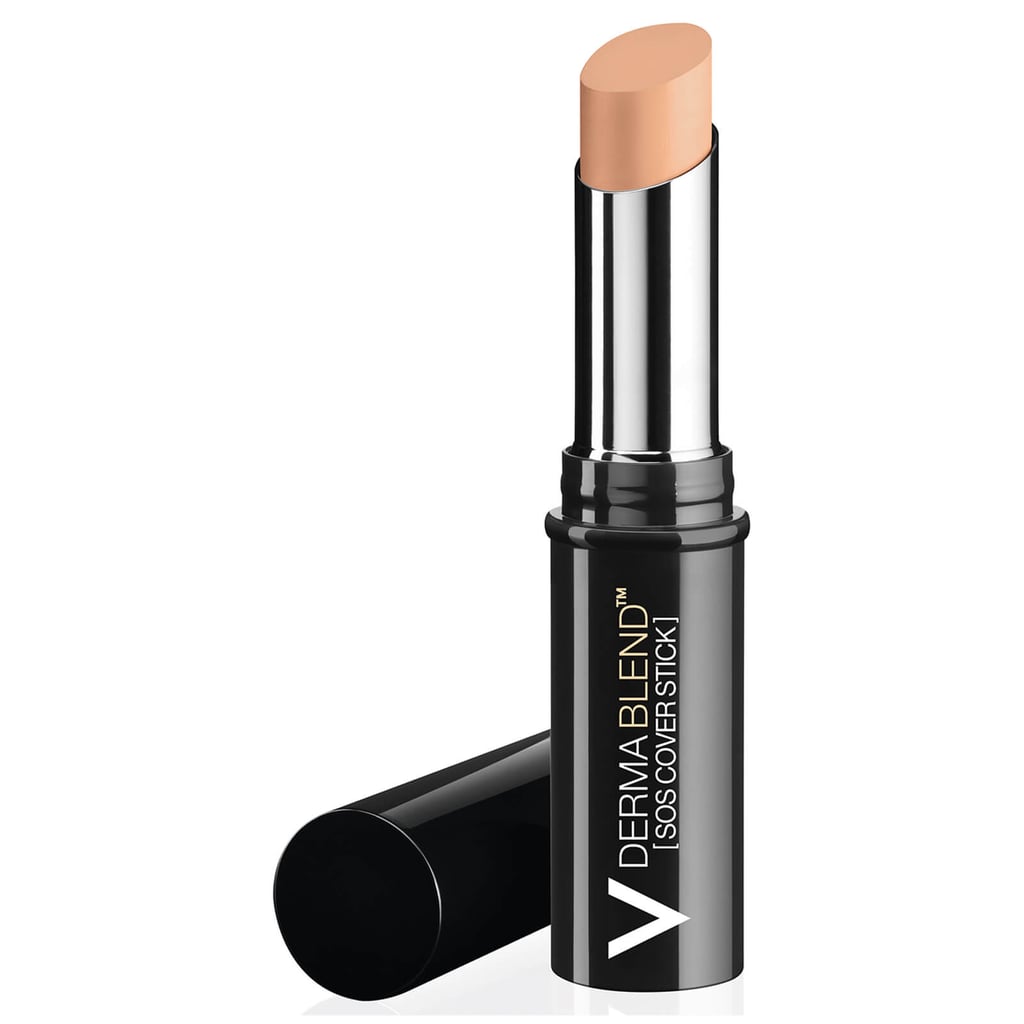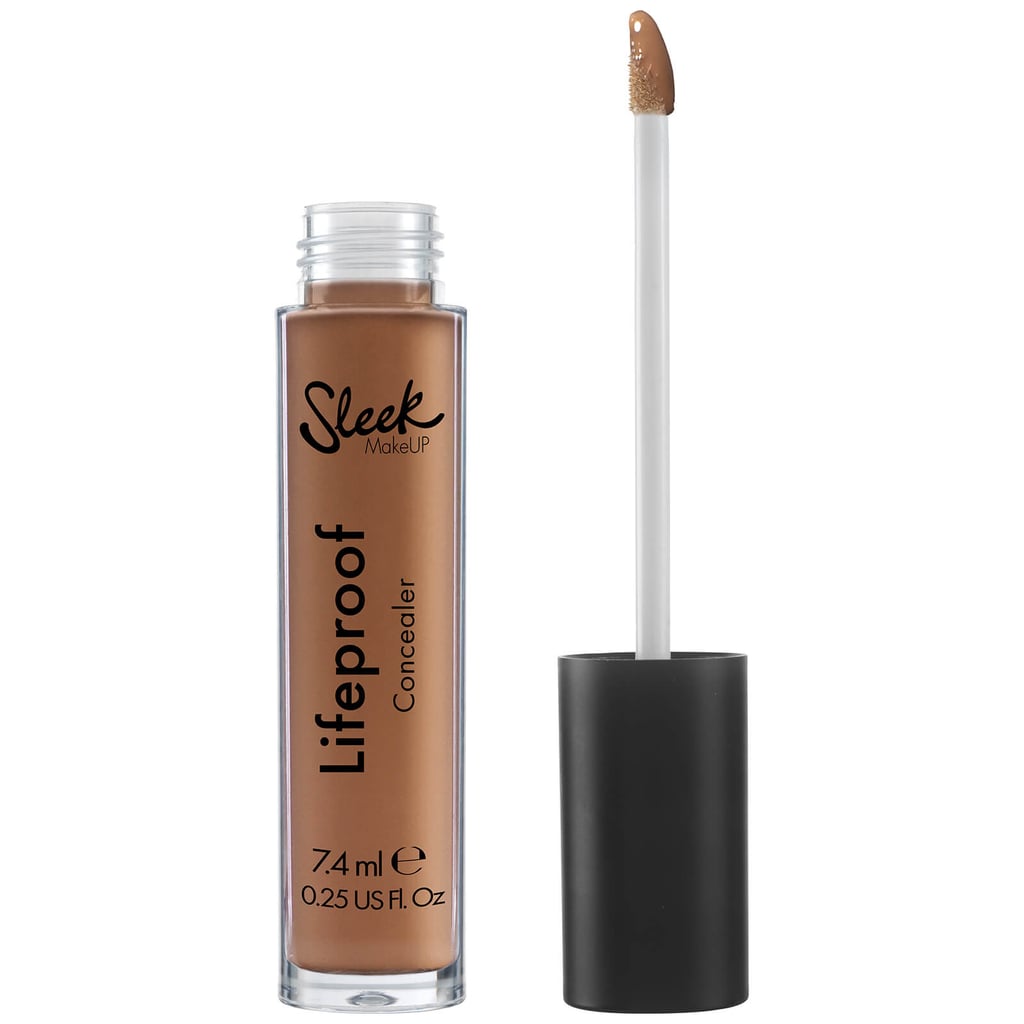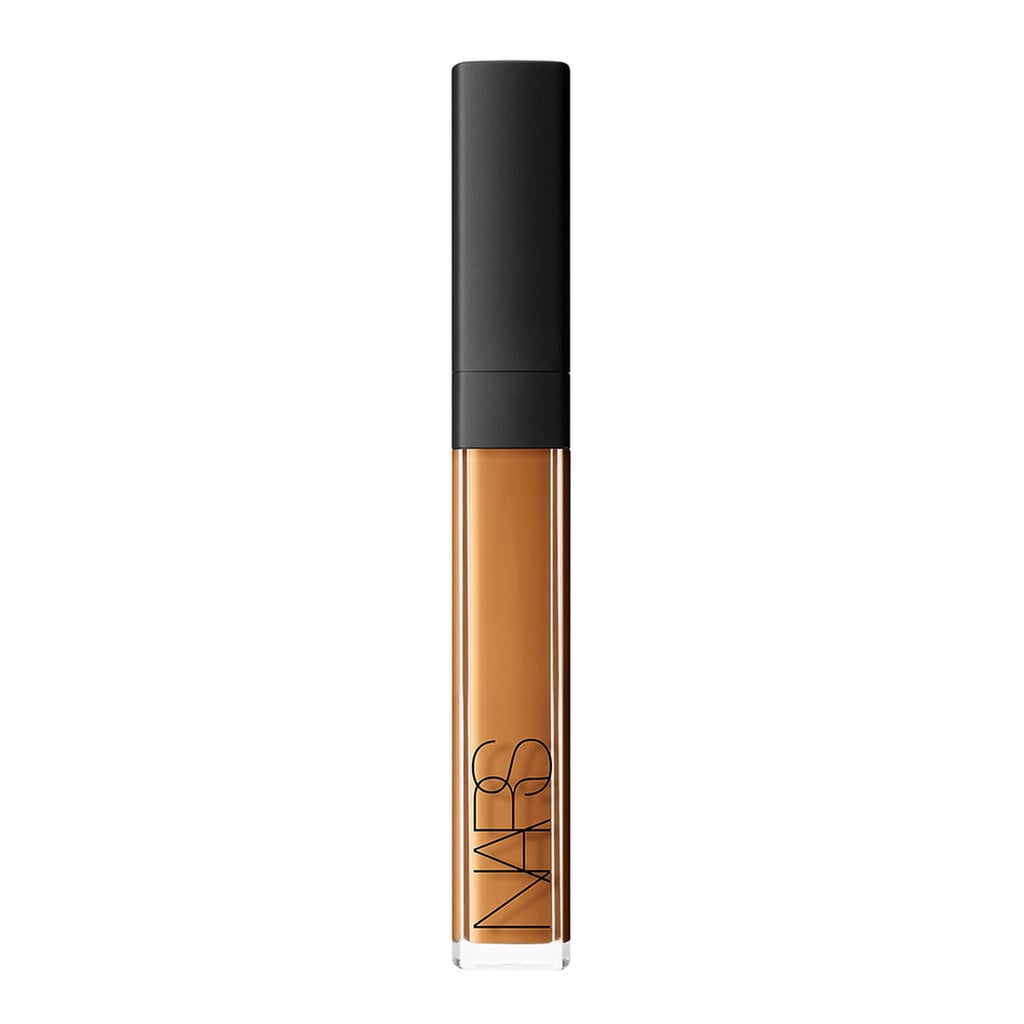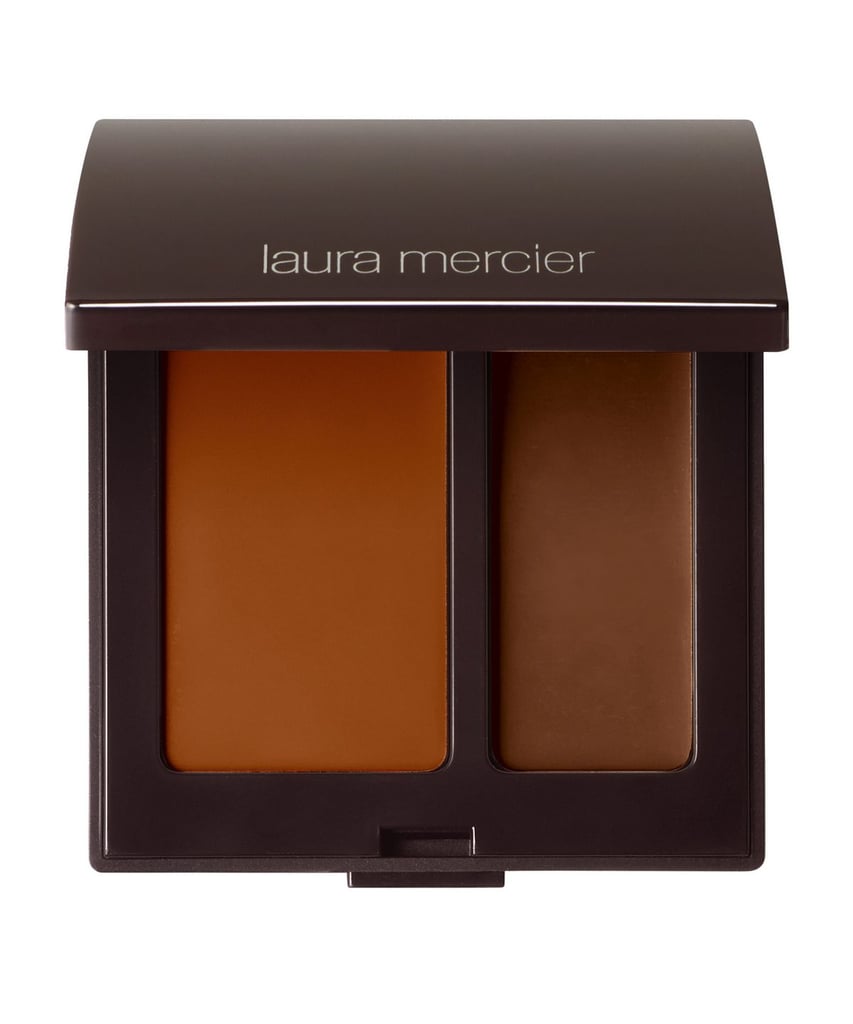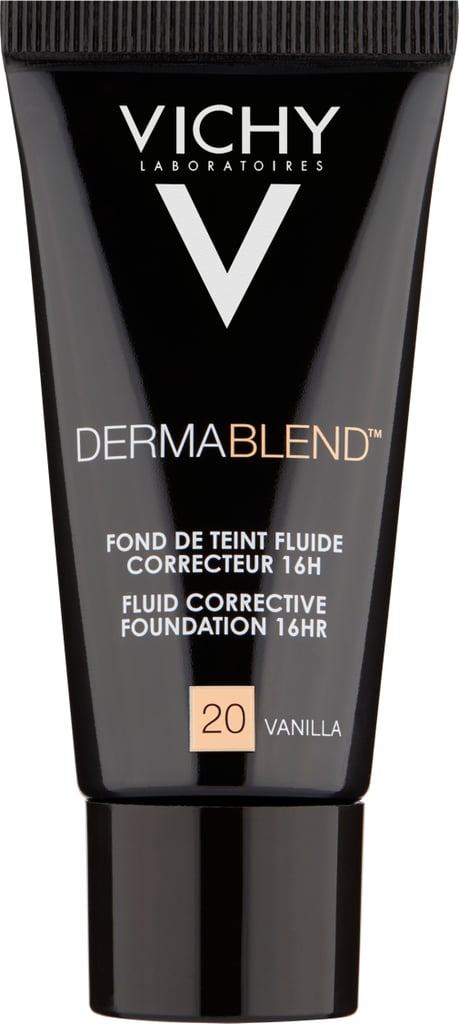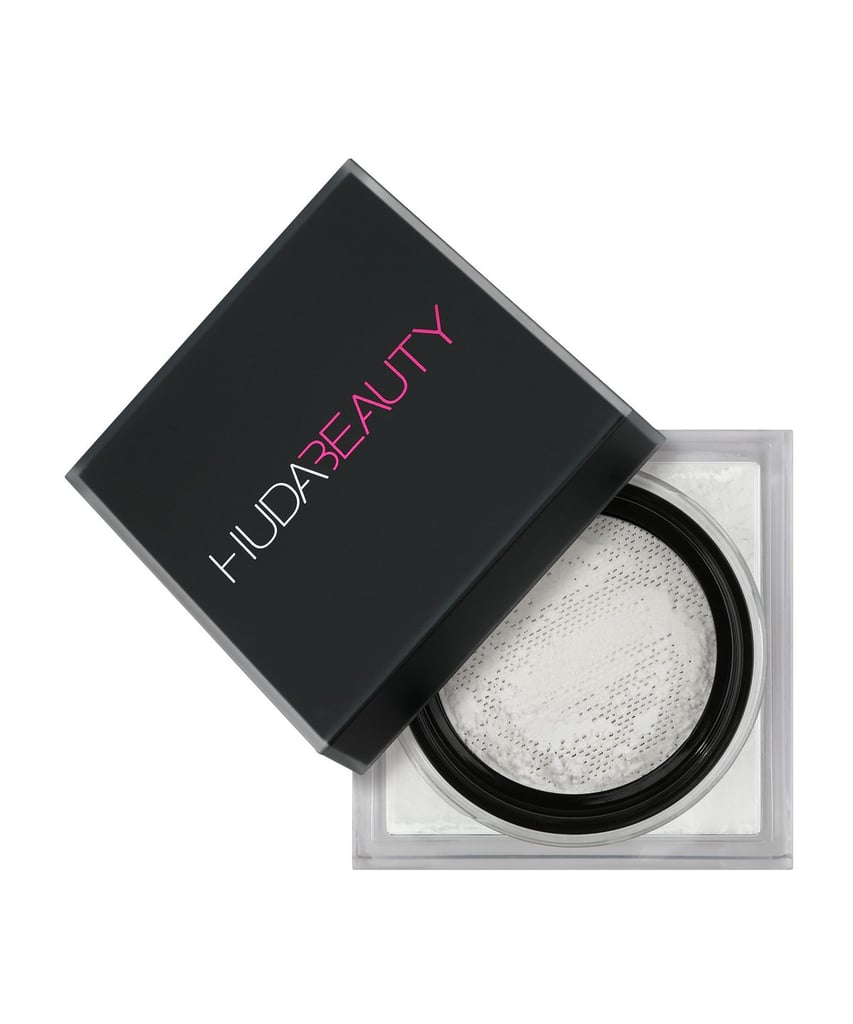Look, we'll be straight: spots are not easy to cover up [1]. And despite all the advice not to, you've probably (definitely) found yourself popping a spot, grabbing your thickest concealer, and furiously applying it with any old makeup brush that probably hasn't cleaned in weeks. Honestly, we've all been there, and slapping on a bit of concealer works in a pinch. But if you want to cover up breakouts and have it look natural, there's a little more to consider. Not all spots are created equal, and not all concealers are created equal, so to expertly cover breakouts you need to take into account A) the type of spot you have and B) the type of concealer you're using before you even get to applying anything on your face.
Now, we're not saying you need to cover your spots, but if you do choose to conceal your blemishes, it can be tricky to master if you're not a professional. That's why we brought in the big guns: some of the best makeup artists in the industry, plus a top dermatologist to share exactly how they cover each and every type of blemish.
Dermatologist Tip: Be Diligent About Cleanliness
We've never been more hyper aware of hygiene in our lives than now, and this extends to our beauty routine. The reason? We want to reduce the spread of bacteria on the face, which, in turn, reduces the amount of breakouts.
Dr Amélie Seghers, consultant dermatologist at London's Cadogan Clinic [2], has a few words of wisdom. The first is to avoid applying makeup (or skincare) with unwashed fingers or hands. "The skin barrier is not as foolproof so transferring bacteria can end up in a secondary infection aggravating the acne," she says. And it may seem obvious, but if you're applying a decent amount of makeup in the day to conceal blemishes, it's even more important to correctly cleanse at night. Just because you're wearing makeup or have blemish-prone skin, that doesn't mean you need to be harsh, though. "Gently cleanse the skin without too much force and avoid using harsh exfoliants," says Dr Seghers. And make sure you're cleansing twice daily, regardless of makeup or no makeup.
You also need to clean your makeup brushes more than normal. If you're not sure of the best practices, we put together a handy guide with all the details you'll ever need in correctly washing your makeup brushes [3]. Additionally, Pixi's resident makeup artist, Amanda Bell [4], told POPSUGAR that you may want to look out for brush cleaners with antibacterial properties — she loves Parian Spirit [5] or Cinema Secrets [6] — which ensures your brushes are completely clean and stay in top shape.
Additionally, Dr Seghers says you should look for products that are non-comedogenic (non-clogging) as they keep your pores from getting blocked, which can already be a problem for those with acne. "You might want to opt for mineral-based foundation — which are often powder-based — as this is naturally oil-free, which is what you want for acne-prone skin," she adds. You should also avoid fragranced products where possible, as these can aggravate your skin.
Dr Seghers last tip was to be mindful of using expired or old products, and to be extra careful with certain organic products as the preservatives they use (if any) are not as powerful, so products might expire faster. "There is an expiration date image on products that say how long the product is good for after opening, e.g. 3M, 6M, 9M, 12M," she explains. If you want to be extra cautious, a good habit to get into is to write down when you open the product to keep track of time.
Makeup Artist Tip: How to Cover Whiteheads
Possibly one of the easier types of spots to conceal is a whitehead. If you've resisted the urge to pop it right before applying your makeup, we applaud you. "For small whiteheads, you need a precision concealer brush to pinpoint the blemish, only," explains Bell. She tends to prefer nylon brushes for this (as she's vegan, Bell's favourite is cruelty-free brand, Zoeva [7]) because they're super easy to blend with, plus they're much easier to wash. In terms of formula for covering whiteheads, Bell suggests choosing a "richly pigmented, water-based concealer where possible."
For whiteheads, application order is really down to preference, as there's an age old makeup artist debate over what to apply first: concealer or foundation. London-based makeup artist, Hannah Martin [8], often starts with the base makeup as normal (skin prep and foundation) then conceals afterwards. "You can stand for ages concealing blemishes and then moving all that hard work after applying your foundation on top of it," she explains. On the other hand, Letitia Sophia [9] — who works with the likes of Maya Jama and Winnie Harlow — prefers to apply a full-coverage concealer to blemishes and blend this out before applying her foundation over the top, and marrying the two together. So, it really is down to your personal preference. As is often found when it comes to beauty, trial and error is the name of the game.
Makeup Artist Tip: How to Cover Cystic Spots
The first thing to consider when it comes to covering cystic spots is the formula. "I would suggest using a product that isn't too liquidy as the heat from the inflamed area will make it wear off very quickly", says makeup artist Ruby Hammer MBE [10]. And Sophia echos this: "I like my concealers to be creamy and not too liquid-based."
As for technique, Martin has a specific and effective way of covering cystic spots. "Try drawing a cross over the blemish and then dab, either with your finger or using a small stippling brush, to evenly spread the concealer," she explains. "The aim is to cover a greater surface area than just the spot itself to try and make your concealer less obvious."
As those with cystic acne often have oily skin, Hammer and Martin always set concealer with a little bit of powder to hold the makeup in place. This is especially important if you want your makeup to withstand a busy day or occasion. It's also good to look out for a powder that isn't too strongly pigmented. Instead, use a sheer, loose powder to make sure the spot doesn't stand out, but rather blends seamlessly with the rest of the base makeup. Martin even likes to leave the powder on while finishing the rest of your makeup then dusting off the excess at the end (i.e. baking the makeup).
Makeup Artist Tip: How to Cover Open or Healing Spots
Unfortunately, open or healing spots are some of the hardest to cover as you're dealing with a lot of different issues at once: the skin can be inflamed, red, sore, and might be both flaking and wet. But fear not, these blemishes are no match for these makeup artists.
Makeup artists' best advice is to not pick at the spot in the first place, which we all know is easier said than done (although, it's important for us to say it again). According to Martin, it's easier to conceal a bump than a spot that's just been popped because "makeup won't adhere to the wet, broken skin."
"If you're dealing with an open or healing spot, it's usually best to use a cream-based concealer, such as the MAC Studio Finish Concealer, as they are going to give the best coverage and stick to the skin right away," says Sophia. "Whereas you might find yourself having to layer quite a lot of product when using more of a liquid based consistency." Martin also likes to use a creamy formula, noting the Derma Colour Camouflage Mini Palettes as one of her go-tos.
When it comes to the application technique, makeup artist and Sleek spokesperson, Francesca Brazzo [11], prefers to use her finger for dry or healing blemishes. "If you use a fluffy brush, you may find that you end up fluffing up the blemish and dry skin. Pat your concealer onto the blemish so you don't wipe the concealer away as you're applying it," she adds. This way, you'll get full coverage without irritating the skin. If you can't or don't want to use your finger, Martin recommends a stippling brush.
Makeup Artist Tip: How to Cover Blackheads
For blackheads, you'll want to take a less precise, pinpoint technique and more of an all-over approach. But before that, Bell explains that prepping the skin is essential. "Steer clear of primers with an overly shimmery pigment, as they can make enlarged pores look more noticeable," explains Bell. "The best to still incorporate lustre or sheen is to use it in targeted areas after the base and concealer." Additionally, look for a primer with ingredients such as willow bark extract or salicylic acid — she loves Pixi's Flawless & Poreless Primer [12] — which gives the skin a velvety canvas with all of the skin care benefits, too.
Unlike other types of spots, where liquid-y formulas are avoided, this is where liquids can work well when used correctly. Layer a liquid concealer on top of foundation where the blackheads are most present and blend this together using a sponge or makeup brush. This will help to conceal many of the blackheads without the makeup appearing heavy or cake-y.
Makeup Artist Tip: How to Cover Healed Spots or Pigmentation?
Covering healed spots or even areas of pigmentation can also present its own challenges. Though Hammer does note that "flat dark marks are easier to cover than a red-hot spot waiting to pop." When it comes to formulas, high-coverage and highly-pigmented concealers will help. "I prefer more cake-y concealers that are slightly drier in texture — the kind you'd find in a pot rather than a tube — for scarring or highly pigmented blemishes. They generally have more coverage and blend out well with a brush," says Brazzo.
If you find concealer alone isn't enough to cover the blemishes, try using a colour corrector to cancel out the undertones. For darker skin tones, try using an orange, peach, or red colour corrector to cancel out any pigmentation. For lighter skin, try using green to cancel out any redness pigmentation caused by healed spots.
